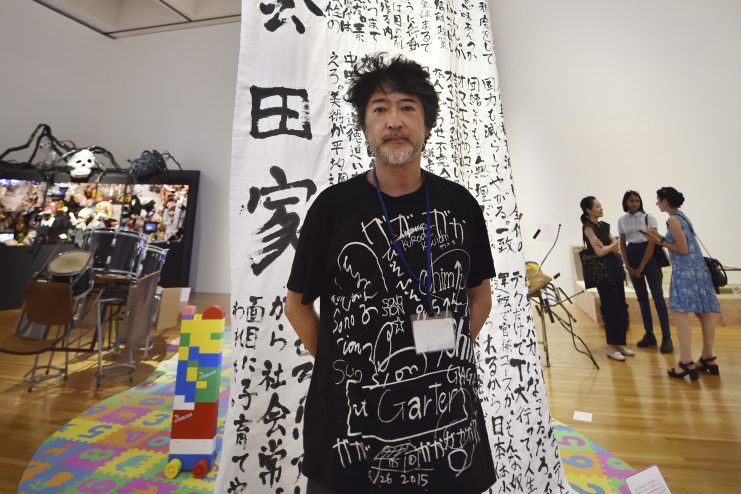
.jpg)
A soft blanket and a brown paper sheet had been carefully sprinkled with dirt. A flower pot sprayed with orange paint sat on a roll of paper. A fluorescent tube had been laid across the floor. Her exhibition “Demonstration” at Talion Gallery this summer set out to think through the nature of ordinariness. eizo Kioku/Courtesy the artist and Talion GalleryĪrtist Eri Takayanagi uses words like “liberation” and “attack” to describe the work she makes from found objects. Installation view of Eri Takayanagi’s “Demonstration” at Talion Gallery. It was a difficult and expensive place to live, making it easier to invest in yourself than in any plot of land. Tokyo was not for the faint of heart or the low of income. That mindset extended beyond the underground music scene to ideals for a city they hoped could be more personal and individual. Reading back, it struck me how Friction had brought some of the do-it-yourself mentality of ’70s New York home with them along with a passion to rail against the failures of the modern world.

This was in the years before the affluence of the mid-’80s amid a cash-rich “bubble economy” that over-inflated its own worth.

Its economy was heavily affected by the oil crisis in Iran, as it depended on imports with few natural resources of its own. Japan wrestled with countries still fighting in parts of Vietnam, and argued with Russia over islands it had lost following World War II. It was as notable as No Wave but less organized, in an awkward period for a city full of people with pent-up energy and nowhere to go. As visas expired, the band came home and started its own scene known for a time as Tokyo Rockers. Temporarily, it was mine too.įriction formed in Tokyo in 1978, having returned from a year hanging around downtown New York with icons from the early No Wave scene, including Diego Cortez and Lydia Lunch. How could he paint, he wondered at the time, against a backdrop of war fought on one side of the world, in Southeast Asia, with people on the other side looking up and claiming territory on the surface of the moon for all mankind? Could he make art beyond what Minimalism had fashioned from Modernism’s demise and head somewhere more spirited instead? Music was partly the answer. He recalled an urge to “rage against the death of Modernism” as an artist. Along the way I read an interview with the New York painter Taro Suzuki, who started his own experimental band, Youth in Asia, as he left art school in the early 1970s.

Escaping Tokyo, I heard my first live music in who knows how long. In June, I ran the gauntlet through driving rain to watch the 40-year-old underground rock band Friction perform in Kawasaki, an industrial city less than an hour to the south that plays home to marginal communities and illegal raves. Photo: Stuart MunroĬhanges in the seasons came thick and fast, tripping over each other on their way to summer. The art-rock band Friction performs in Kawasaki.


 0 kommentar(er)
0 kommentar(er)
